> cs 342: intro to HCI_
Professor Leesha "Aisha" Shah
moliri: (latin, v) to endeavor, to attempt, to create
lmshah2 {at} neiu {dot} edu
CBT 105
>
syllabus
>
welcome :)
>
HCI progress map
>
student drive
>
slack (download the desktop/mobile app for notifications!)
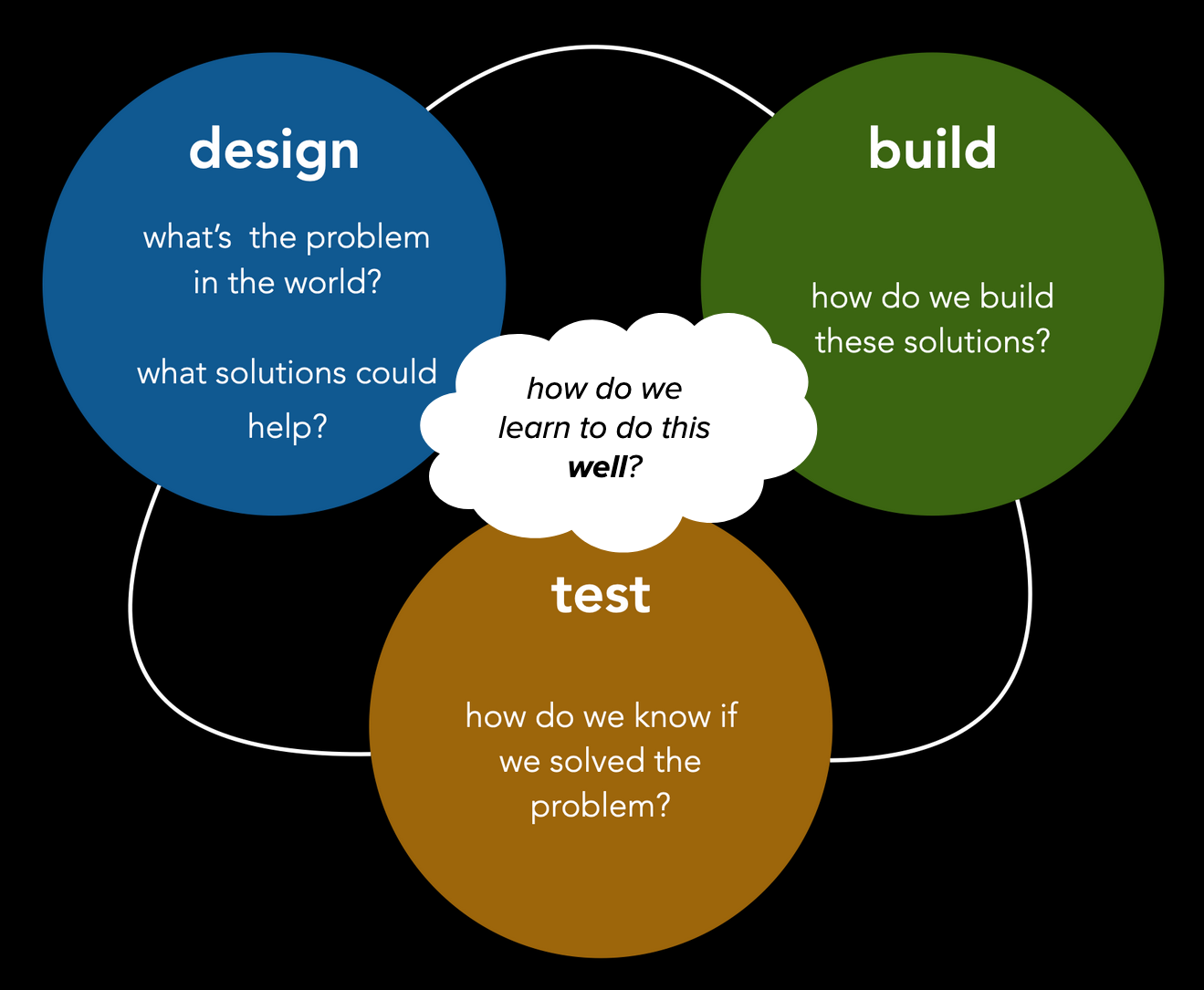
> welcome :)_

Hi! I'm Professor Shah.
You can learn more about me and my work at leesha.io.
Human-Computer Interaction (HCI) serves as the bridge between computing and humanity. The effective design of HCI systems requires a keen understanding of how interfaces and computer systems usefully support human endeavors (or not).
How do we know if the characteristics we design in our systems will lead to a desired outcome? How do we thoughtfully instantiate our designs in effective interface and system models? Why do existing solutions not work? Taking a step back, are our technical solutions actually addressing the underlying problems that humans face? Do we actually understand the problem?
Through this course, we will learn to ask and answer these questions for ourselves. In part, we’ll focus on developing our critical thinking and problem solving skills. We’ll practice by working on structured team projects, with mentor critique. And we’ll emphasize learning the effective structures you need to design HCI systems. We’ll also focus on softening our critical lens to achieve a deeper understanding of how to solve human problems. We’ll practice expanding our capacities for skills like humility, empathy, curiosity – mindsets that are necessary for a successful designer. Finally, we’ll focus on effective ways of working – methods like agile sprints, rapid prototyping and user testing. In learning to “do”, we will challenge ourselves to face and embrace our fears, imperfections, and failures that may otherwise hold us back from taking the next step forward. Together, we will practice how to approach difficult problems skillfully.
> Sprint 9: Design and Testing++_
our mindset: rationale
Sprint 9 is our last major design sprint. This week, think about the risks across your entire design model (problem statement, design argument, interface argument, and system argument). What will be the last major risks you want to focus on in this final iteration?
We will also begin preparations for your final defense presentations which will begin to take place next week. We've given you lots of ways to prepare (a workshop session, a guide, a template). Depending on which day your team presents, consider how to plan out your time for preparing and practicing your defense!
Your project deliverables for this week:
- summarize your key insights from user testing using Canvas 09: Design and Testing++
- compose + revise your arguments and user testing plan to incorporate new understanding
- Canvas 09: Problem Statement
- Canvas 09: Design Argument
- Canvas 09: Interface Argument
- Canvas 09: System Argument
- Canvas 09: User Testing
- assess the risks in your argumentation and testing plan
- build a revised prototype that implements your new argumentation
- conduct user testing to learn what works/doesn't work about your design approach
- capture your findings in your design log
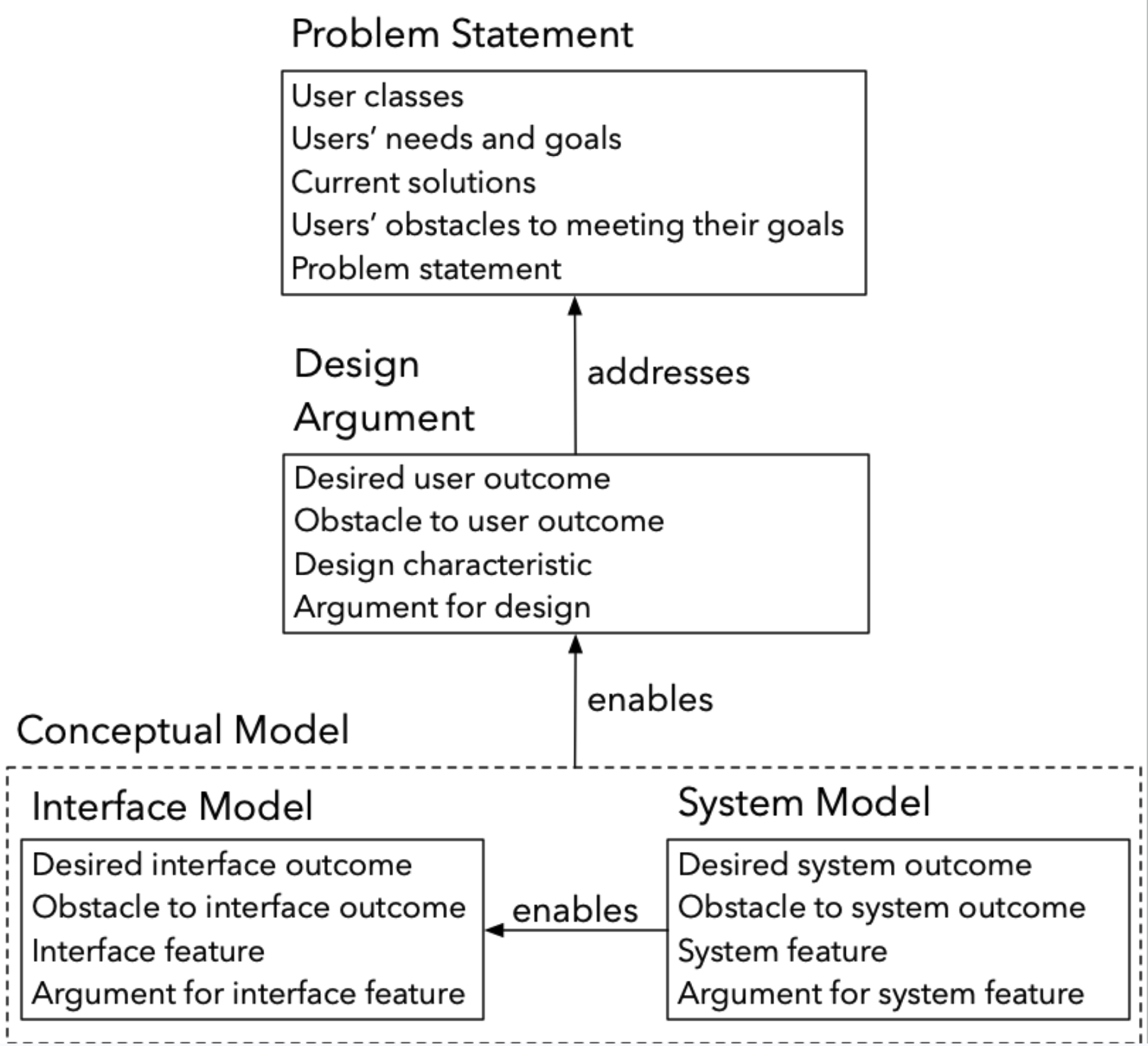
the complete design model
> Sprint 8: System Argument_
our mindset: fear + failure
Sprint 8 introduces the last layer to our argumentation -- the system argument. You will continue with another design sprint this week, advancing your argumentation and prototype to consider what your system may need on the back end to allow your interface to function. For example, how will we store and access data?
Your project deliverables for this week and next:
- summarize your key insights from user testing using Canvas 08: Synthesizing User Testing
- compose + revise your arguments and user testing plan to incorporate new understanding
- Canvas 08: Problem Statement
- Canvas 08: Design Argument
- Canvas 08: Interface Argument
- Canvas 08: System Argument new!
- Canvas 08: User Testing
- assess the risks in your argumentation and testing plan
- build a revised prototype that implements your new argumentation
- conduct user testing to learn what works/doesn't work about your design approach
- capture your findings in your design log
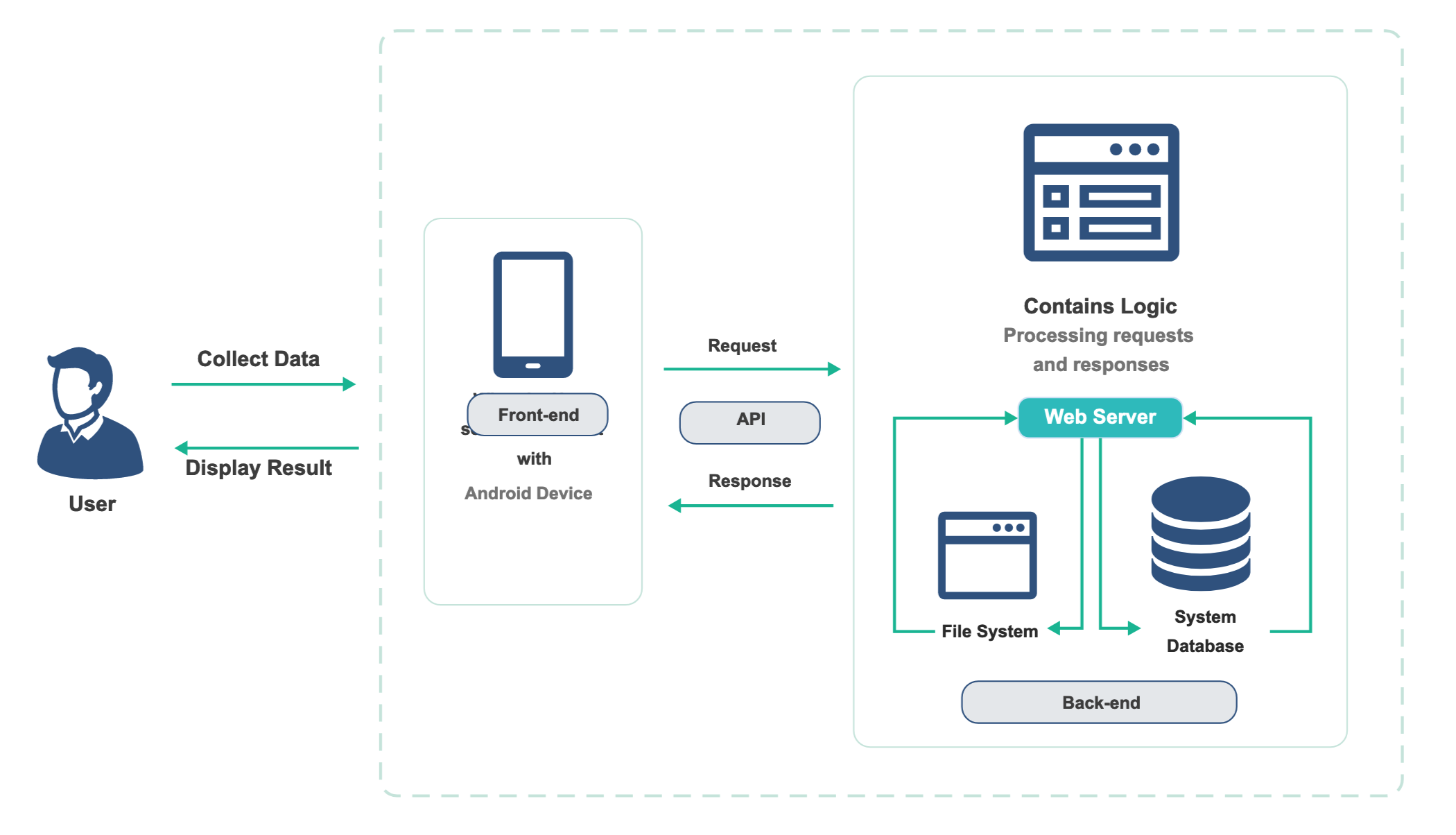
an example system architecture diagram
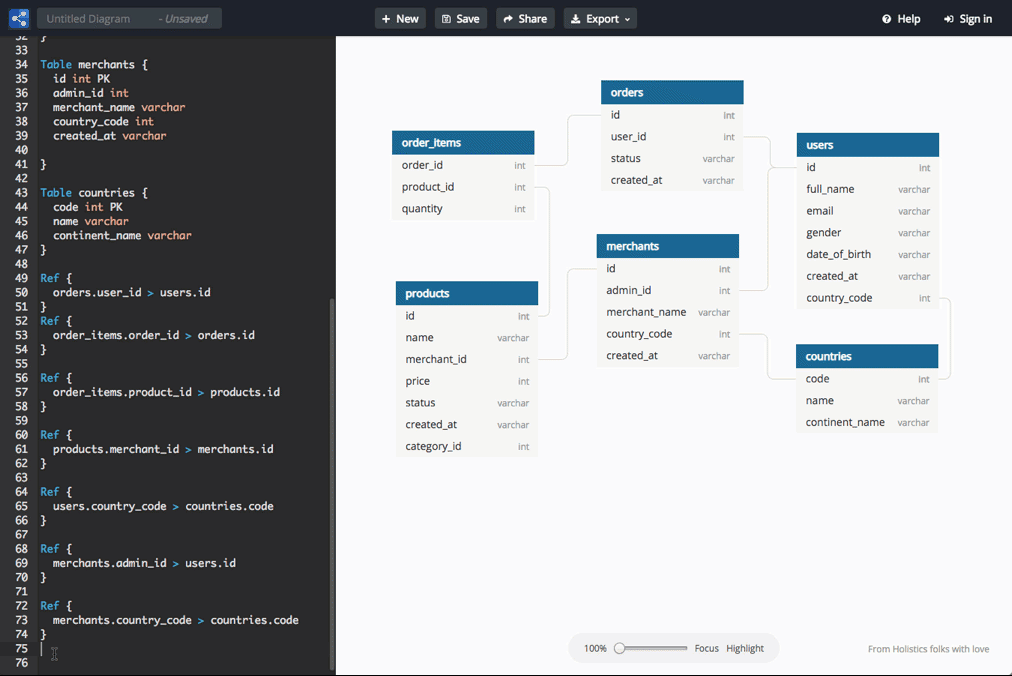
database design
> Sprint 7: Interface Argument_
our mindset: interaction
Sprint 7 introduces the next layer to our argumentation -- the interface argument. You will continue with another design sprint this week, advancing your argumentation and prototype to consider how your user needs to functionally interact with your design. Yes, we get to move on from paper prototyping now.
Your project deliverables for this week and next:
- summarize your key insights from user testing using Canvas 07: Synthesizing User Testing
- compose + revise your arguments and user testing plan to incorporate new understanding
- Canvas 07: Problem Statement
- Canvas 07: Design Argument
- Canvas 07: Interface Argument new!
- Canvas 07: User Testing
- assess the risks in your argumentation and testing plan
- build a revised prototype that implements your new argumentation
- conduct user testing to learn what works/doesn't work about your design approach
- capture your findings in your design log

an interactive prototype using figma
> Sprint 6: Studio Critique | Takeaways from User Testing++ _
our mindset: reflection
Sprint 6 brings us to about midway through the term. It's worthwhile to pause and ask ourselves -- how are things going? To do this, you will each complete a midterm self-assessment as individuals, where you will be asked about your project, your process, and your teamwork. You will get out of this what you put into it. Plan to spend ~30-60 minutes on it this week.
For the project itself, you will continue with another design sprint this week, practicing another round of takeaways from user testing. And yes, we test again.
Your project deliverables for this week:
- complete your individual midterm self-assessments (in student drive)
- summarize your key insights from user testing using Canvas 06: Synthesizing User Testing
- revise your arguments and user testing plan to incorporate new understanding
- Canvas 06: Problem Statement
- Canvas 06: Design Argument
- Canvas 06: User Testing
- assess the risks in your argumentation and testing plan
- build a revised prototype that implements your new argumentation
- conduct user testing to learn what works/doesn't work about your design approach
- capture your findings in your design log
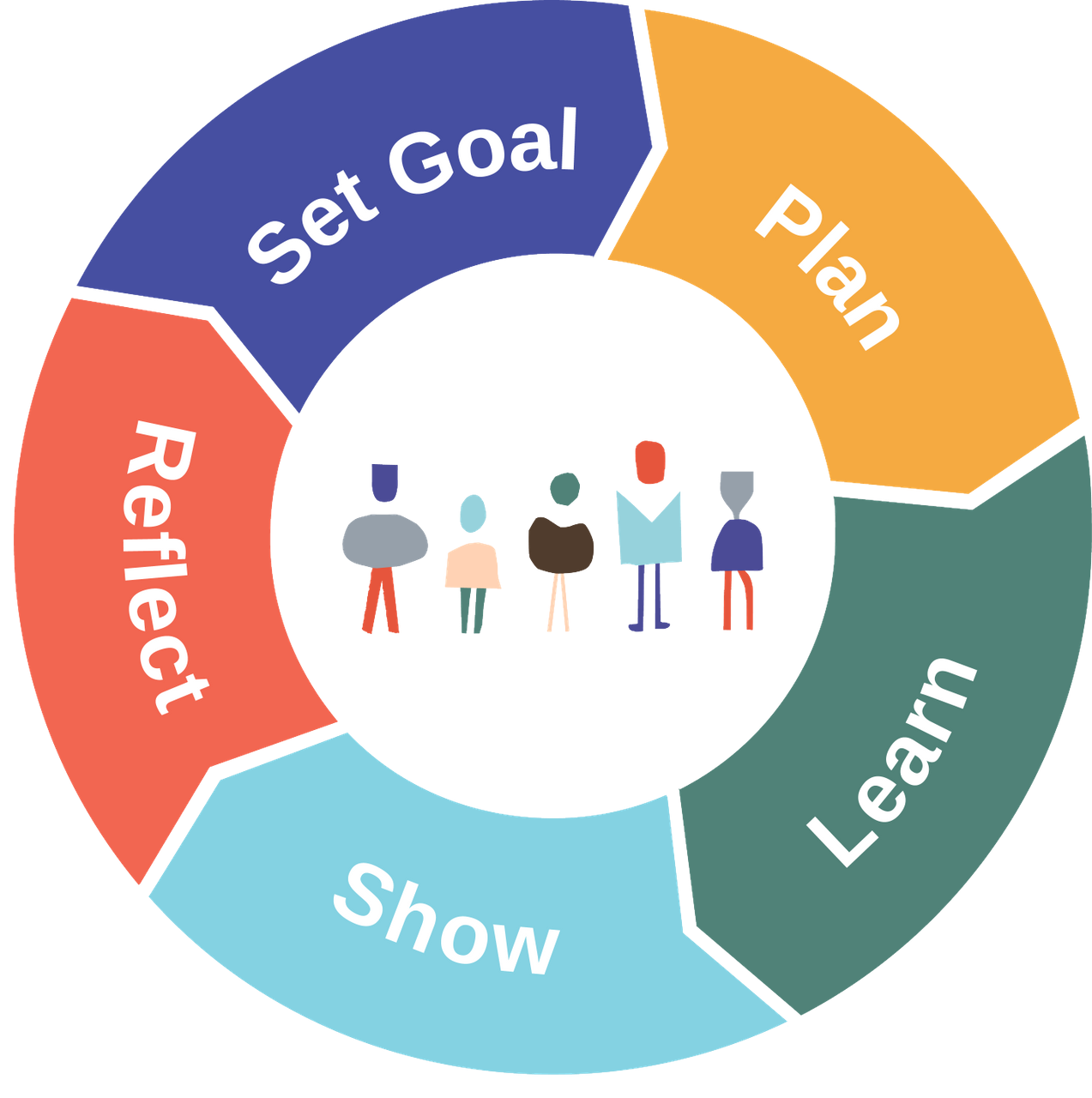
reflecting on our self-direction
> Sprint 5: Takeaways from User Testing _
our mindset: humility
This week, we learn to take our findings from our user test, and use it to meaninfully update our arguments, our design, and our testing approach. And then, we test again.
Your project deliverables for this week:
- summarize your key insights from user testing using Canvas 05: Synthesizing User Testing
- revise your arguments and user testing plan to incorporate new understanding
- Canvas 05: Problem Statement
- Canvas 05: Design Argument
- Canvas 05: User Testing
- assess the risks in your argumentation and testing plan
- build a revised prototype that implements your new argumentation
- conduct user testing to learn what works/doesn't work about your design approach
- capture your findings in your design log
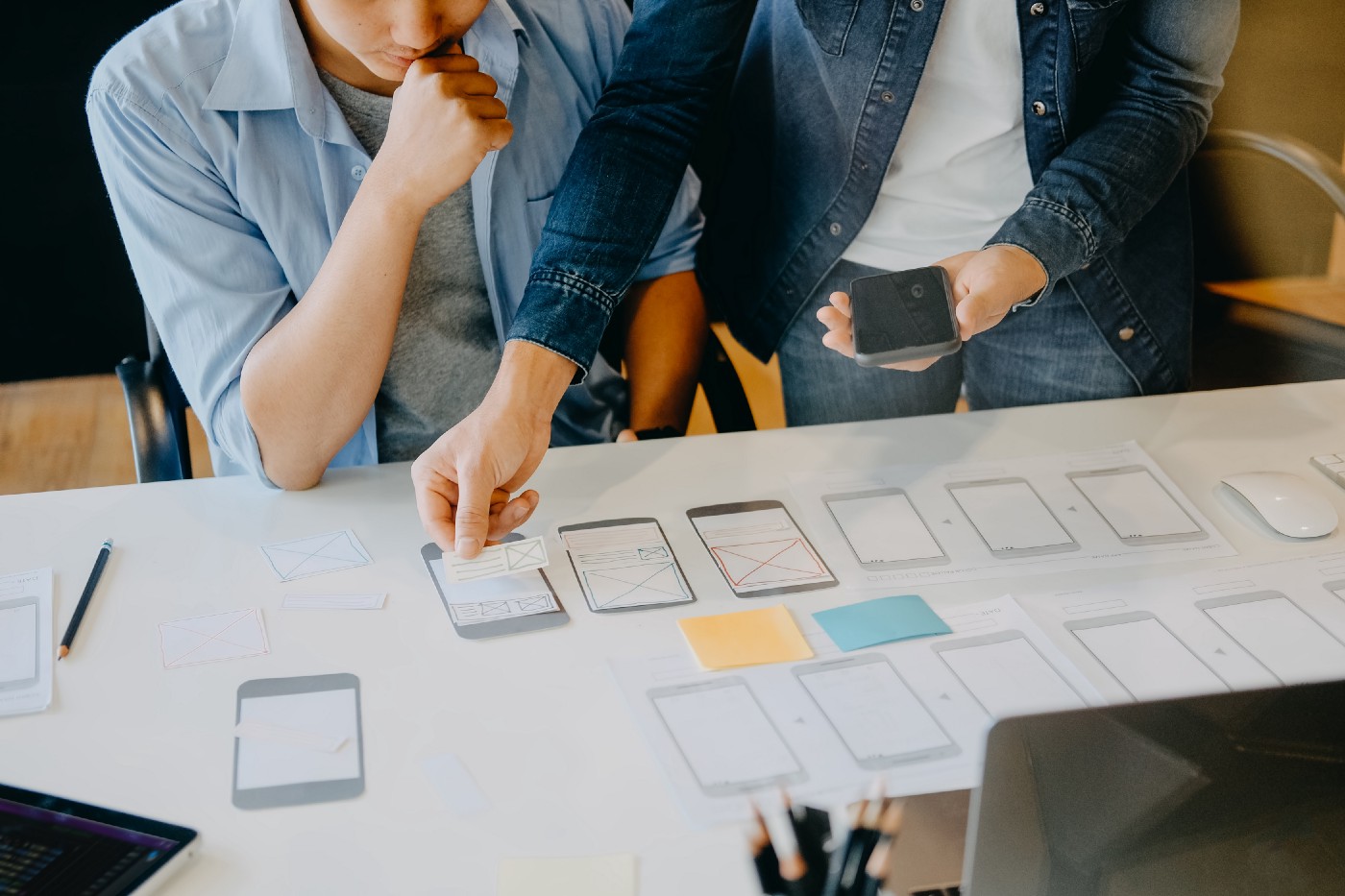
conducting a user test
> Sprint 4: Design Arguments _
our mindset: scrappiness
Sprint 4 marks the beginning of a series of design sprints, where you will iteratively design, build, and test each week til end of term.
This week, we start by composing a design argument for a solution that addresses the problem you uncovered in your needfinding work. You will then develop a prototype that implements this argument. Finally, you will plan and conduct a user test to test your design with your users. You will rinse and repeat this process next week, focusing on improving your user testing plan.
Your project deliverables for the next two weeks:
- compose a design argument using Canvas 04: Design Argument
- assess the risks of your design argument
- build a prototype that will test you design argument
- compose a user testing plan using Canvas 04: User Testing Plan
- assess the risks of your user testing plan
- conduct user testing to learn what works/doesn't work about your design approach
- summarize your findings in your design log

a scrappy paper prototype
> Sprint 3: Deepening Your Needfinding _
our mindset: patience
This week, you will learn to assess risks in your project. we will first practice by assessing the risks in your problem statement -- what do we know/not know about the user problem? we will then assess risk in our needfinding process -- what are ways we can conduct more effective interviews? you will then take your learnings and conduct a few more interviews to deepen your needfinding. Then discuss your findings, and revise your problem statement for your user group.
Your project deliverables this week:
- as a team, assess the risks of your problem statement
- as a team, assess the risks in your needfinding process
- conduct revised user interviews, deepening your needfinding
- summarize your findings in Canvas 03: Revised Problem Statement -- use the checklists at the bottom to assess for risks before workshop
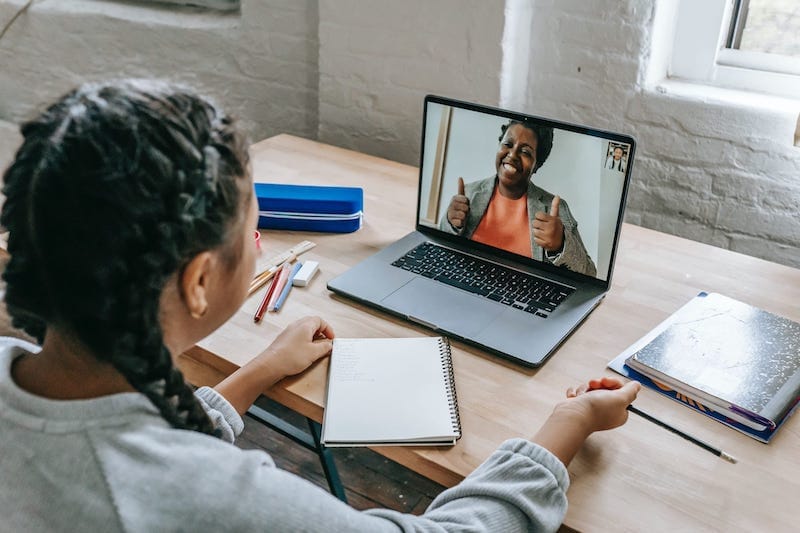
understanding the problem
> Sprint 2: Needfinding and Analysis with Your Team_
our mindset: curiosity
This week, you will work as a team to conduct 5 needfinding interviews with individuals from the user population/ problem domain you picked as a team. Then discuss your findings, and work on articulating a problem statement for your user group. As always, start each week by looking at the HCI progress map.
Your project deliverables this week:
- as a team, conduct 5 user interviews to understand the user problem in more detail
- summarize your interview findings in Canvas 02: Problem Statement -- use the checklists at the bottom to evaluate what you've written

the nature of teamwork
> Sprint 1: Needfinding and Analysis on Your Own_
our mindset: empathy
This week, your job as individuals is to conduct needfinding interviews with 3 users from different populations. You will then discuss, and pick one user population + problem to focus on as a team. As always, start each week by looking at the HCI progress map.
As we get into a flow, you'll notice a weekly routine start to form...
before each week starts
- read through the project brief to understand your deliverables for the week
- meet as a team to make your compass plan for the week
during each week
- do your project work as a team -- this will vary throughout the semester. right now, we're doing lots of user interviews. soon, we will begin prototyping and testing our designs with users
- summarize your project work in your canvas templates for the week
- get feedback on your canvas templates during your weekly workshop
at the end of each week
- log your completed deliverables in your planning compass -- be sure to include links so I can pop in and give you feedback
- reflect as a team, and use your planning compass to make your plan for next week
- get feedback on your canvas templates during your weekly workshop
Your project deliverables this week:
- each team member should conduct 1-3 user interviews to understand different problems from different user populations
- each team member should summarize their interviews in a Canvas 01: User Interviews slide in the team canvas
- teams should meet to discuss project ideas, and use Canvas 01: Choosing Your Team Project to pick a problem to focus on for the rest of the semester
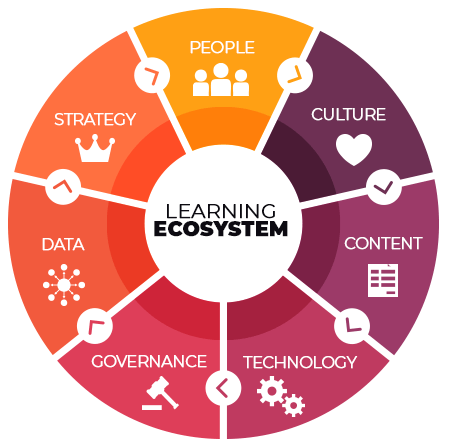
working within your learning ecosystem
> Sprint 0: Orienting to our Ecosystem_
our mindset: open mindedness
This week, your job is to orient to our little HCI ecosystem.
You have each been added to a team on slack. You should also see cubby folders for each team in the student drive (note: we may have a few more folks join us).
Every week, you will find the required readings, slides, and project assignments in our HCI progress map. This doc lives in our student drive. You must complete these before the next week’s Monday Meeting.
We will meet for our Monday Meetings on Mondays from 11:30-12:45p via Zoom. Attendance is required. Due to the holiday, our first meeting will be this Wednesday. Check the progress map to see what you and your team need to complete before this first Studio Meeting!
Every week, we will meet for our Weekly Workshops, where we’ll deliberately practice components of the project and I will give you feedback. We start next week! Our Workshop will take place every Wednesday from 11:30-12:45p in LWH 3003. Attendance is required.
See you soon.
This class draws from the teachings of my advisor, Haoqi Zhang.